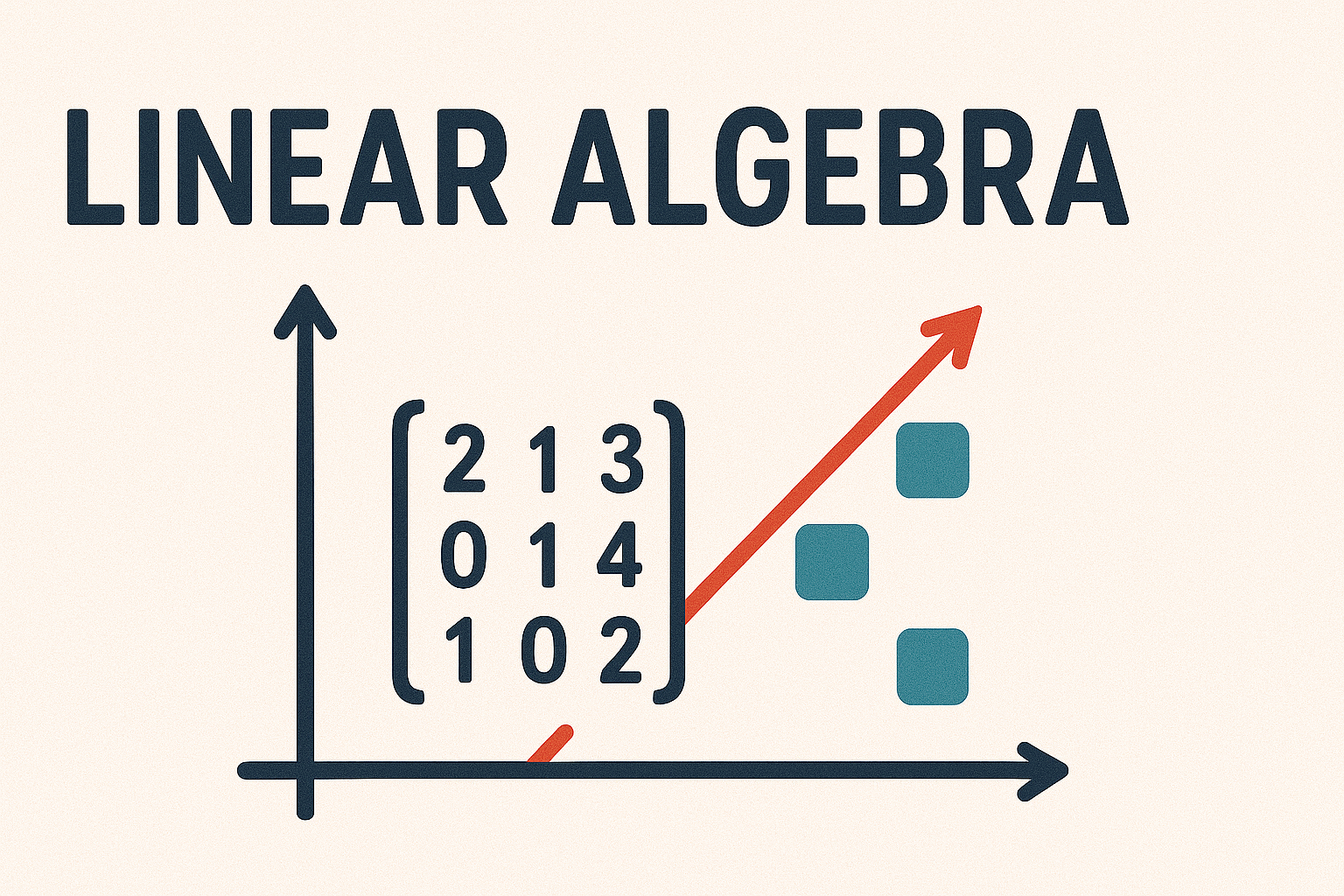6.5. Transformations exercises#
Answer the following exercises based on the content from this chapter. The solutions can be found in the appendices.
Exercise 6.1
Which of the following transformations are linear transformations?
(a) \(T: (x, y) \mapsto (0, y)\)
(b) \(T: (x, y) \mapsto (x, 5)\)
(c) \(T: (x, y, z) \mapsto (x, x - y)\)
(d) \(T: (x, y, z) \mapsto \begin{pmatrix} x + y \\ z \end{pmatrix}\)
(e) \(T: (x, y) \mapsto (3x + 1, y)\)
(f) \(T: f(x) \mapsto \dfrac{\mathrm{d}}{\mathrm{d}x} f(x)\)
(g) \(T: f(x) \mapsto xf(x)\)
(h) \(T: \mathbb{C}^2 \to \mathbb{C}\) where \(T: (x, y) \mapsto x + y\)
(i) \(T: \mathbb{C}^2 \to \mathbb{C}\) where \(T: (x, y) \mapsto x y\)
(j) \(T: \mathbb{C}^2 \to \mathbb{C}\) where \(T: (x, y) \mapsto \bar{y}\)
(\(\bar{x}\) is the complex conjugate of \(x = a + bi\) defined by \(\bar{x} = a - bi\).)
Exercise 6.2
A linear transformation \(T: \mathbb{R}^2 \to \mathbb{R}^2\) is defined by \(T: (x, y) \mapsto (-x + 3y, x - 4y)\). Determine the transformation matrix for \(T\) and hence calculate \(T (2, 5)\).
Exercise 6.3
A linear transformation \(T: \mathbb{R}^2 \to \mathbb{R}^2\) is defined by \(T: (x, y) \mapsto (x - 2y, 2x + 3y)\). Given \(T(\mathbf{u}) = (-1, 5)\) determine \(\mathbf{u}\).
Exercise 6.4
\(T: \mathbb{R}^3 \to \mathbb{R}^3\) is a linear transformation such that
Find the transformation matrix for \(T\).
Exercise 6.5
Rotate the position vector \((2, 1) \in \mathbb{R}^2\) by angle \(\pi/6\) anti-clockwise about the origin.
Exercise 6.6
Reflect the position vector \((5, 3) \in \mathbb{R}^2\) about the line that passes through \((0, 0)\) and makes an angle \(\pi/3\) with the \(x\)-axis.
Exercise 6.7
A square with side lengths 2 is centred at the co-ordinates \((3, 2)\). It is to be translated so the centre is at the origin, rotated by an angle \(\pi/3\) clockwise about the origin and then translated back to its initial position.
(a) Write down a matrix containing the homogeneous co-ordinates for the vertices of the square.
(b) Determine the transformation matrices that perform the three transformations.
(c) Calculate the composite transformation matrix and apply with to the co-ordinate matrix from part (a).
